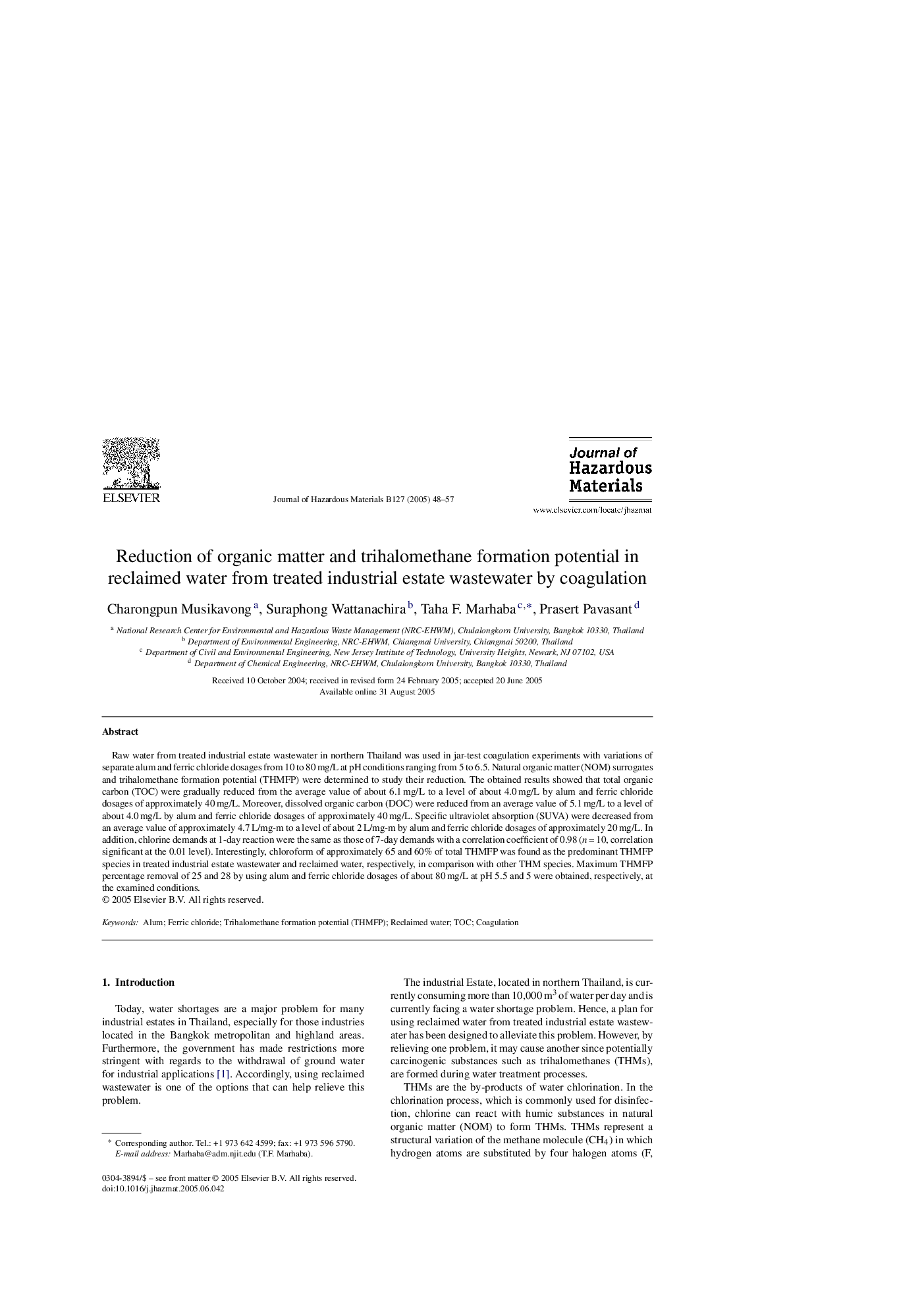| Article ID | Journal | Published Year | Pages | File Type |
|---|---|---|---|---|
| 9674058 | Journal of Hazardous Materials | 2005 | 10 Pages |
Abstract
Raw water from treated industrial estate wastewater in northern Thailand was used in jar-test coagulation experiments with variations of separate alum and ferric chloride dosages from 10 to 80 mg/L at pH conditions ranging from 5 to 6.5. Natural organic matter (NOM) surrogates and trihalomethane formation potential (THMFP) were determined to study their reduction. The obtained results showed that total organic carbon (TOC) were gradually reduced from the average value of about 6.1 mg/L to a level of about 4.0 mg/L by alum and ferric chloride dosages of approximately 40 mg/L. Moreover, dissolved organic carbon (DOC) were reduced from an average value of 5.1 mg/L to a level of about 4.0 mg/L by alum and ferric chloride dosages of approximately 40 mg/L. Specific ultraviolet absorption (SUVA) were decreased from an average value of approximately 4.7 L/mg-m to a level of about 2 L/mg-m by alum and ferric chloride dosages of approximately 20 mg/L. In addition, chlorine demands at 1-day reaction were the same as those of 7-day demands with a correlation coefficient of 0.98 (n = 10, correlation significant at the 0.01 level). Interestingly, chloroform of approximately 65 and 60% of total THMFP was found as the predominant THMFP species in treated industrial estate wastewater and reclaimed water, respectively, in comparison with other THM species. Maximum THMFP percentage removal of 25 and 28 by using alum and ferric chloride dosages of about 80 mg/L at pH 5.5 and 5 were obtained, respectively, at the examined conditions.
Related Topics
Physical Sciences and Engineering
Chemical Engineering
Chemical Health and Safety
Authors
Charongpun Musikavong, Suraphong Wattanachira, Taha F. Marhaba, Prasert Pavasant,
